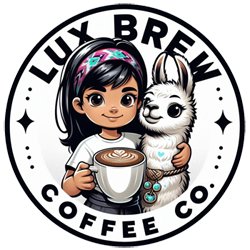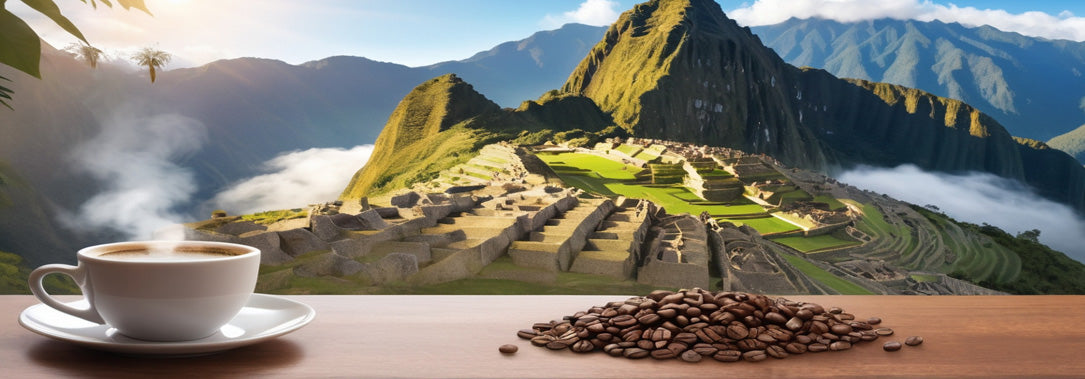


Roasted to Order
Shipped within hours of roasting
Specialty Grade Coffee
Great tasting coffee from around the world
Ethical Farming
Family farms growing great coffee
Frequently Asked Questions
What is Specialty Coffee?
Specialty coffee refers to beans that score 80 points or higher on a 100-point scale by certified coffee tasters. These beans are known for their exceptional flavor profiles, traceable origins, and sustainable farming practices.
How is the coffee roasted?
Coffees are roasted to order allowing roasting, packing and shipping to happen the same day. Coffee profiles are all created using Ikawa sample roasters to find the best roast level for that lot, then transfer the profile to 10 & 15KG drum roasters. The result is the freshest, small batch, craft roasted coffee available.
How is specialty coffee graded?
Green coffee beans are inspected for defects and size by the Q-Grading process. After roasting, the coffee is evaluated through "cupping," where experts assess aroma, flavor, body, acidity, and aftertaste. A score is then assigned based on these attributes.
What types of beans are used in specialty coffee?
The most common types are Arabica and Robusta. Arabica beans are preferred for specialty coffee due to their complex flavors and lower bitterness.
Where does specialty coffee come from?
Specialty coffee is sourced from various regions worldwide, including Indonesia (Sumatra and Bali), East Africa, South America and other parts of the world. Each region imparts distinct flavors to the beans and we ensure that we have something for everyone.
How should I choose specialty coffee for my brewing method?
• Espresso: Medium-dark roast beans from regions like Latin America or East Africa.
• Cold Brew: Medium to dark roasts with chocolate, nutty, or caramel notes.
• French Press: Medium-dark to dark roasts with bold flavors.
• Pour Over: Light to medium-light roasts with bright acidity and complex flavors.
* These are just a general idea of what most people use but you can enjoy and coffee for any type of brewing method that you enjoy and prefer.
What is the best way to brew coffee at home?
The “best” method depends on your taste preferences and lifestyle. If you love bold flavor and body, try a French press. For clean and nuanced cups, pour-over is ideal. If convenience matters, drip coffee makers or pod machines work well. Want rich, intense coffee? Espresso machines or an AeroPress can deliver that. Experiment to find what you love most.
How much caffeine is in a cup of coffee?
Caffeine content varies by brew method, coffee type, and serving size. On average:
• Drip coffee: 95–200 mg per 8 oz
• Espresso: 63 mg per 1 oz shot
• Cold brew: 100–200 mg per 8 oz (can be higher due to concentration)
Robusta beans contain nearly twice the caffeine of Arabica.
What’s the difference between Arabica and Robusta coffee?
Arabica: Smoother, sweeter, with notes of fruit and sugar. Less caffeine.
Robusta: Stronger, more bitter, often with earthy or nutty flavors. More caffeine and commonly used in instant coffee or espresso blends for added crema and strength.
How should I store coffee beans to keep them fresh?
Keep beans in an airtight container away from light, heat, moisture, and air. Avoid the fridge or freezer (unless freezing long-term in vacuum-sealed bags). Use beans within 2–4 weeks of opening for optimal flavor.
What grind size should I use for different brewing methods?
Matching grind size to brew method is crucial for good coffee. Here’s a quick guide:
• Coarse: French press, cold brew
• Medium-coarse: Chemex
• Medium: Drip machines, AeroPress (with longer brew times)
• Fine: Pour-over, AeroPress (with short brew times)
• Extra fine: Espresso, Moka pot
• Turkish: Powder-like grind
How is decaf coffee made?
Decaf is made by removing caffeine using one of several methods:
• Swiss Water Process® (chemical-free) This is the only Decaf we provide
• CO2 Process
• Solvent-based methods (using ethyl acetate or methylene chloride) Most methods retain the flavor while reducing caffeine by about 97–99%.
What makes specialty coffee different from regular coffee?
Specialty coffee is scored 80+ on a 100-point scale by certified tasters and involves:
• High-quality Arabica beans
• Traceable origins
• Ethical sourcing
• Meticulous roasting and brewing
It’s about flavor, transparency, and sustainability—not just the caffeine hit
How can I make espresso at home without a machine?
You can mimic espresso using:
• AeroPress with a metal filter and fine grind
• Moka pot (stovetop espresso)
• Manual lever espresso makers
While not true espresso (due to pressure differences), these methods get you close in flavor and intensity.
What do roast levels mean – and which should I choose?
• Light roast: Bright, acidic, highlights origin flavors. More caffeine.
• Medium roast: Balanced acidity and body. Popular and versatile
• Dark roast: Bold, smoky, with lower acidity. Sometimes bitter.
Choose based on flavor preference, not caffeine myths—light roasts actually retain more caffeine than dark!
